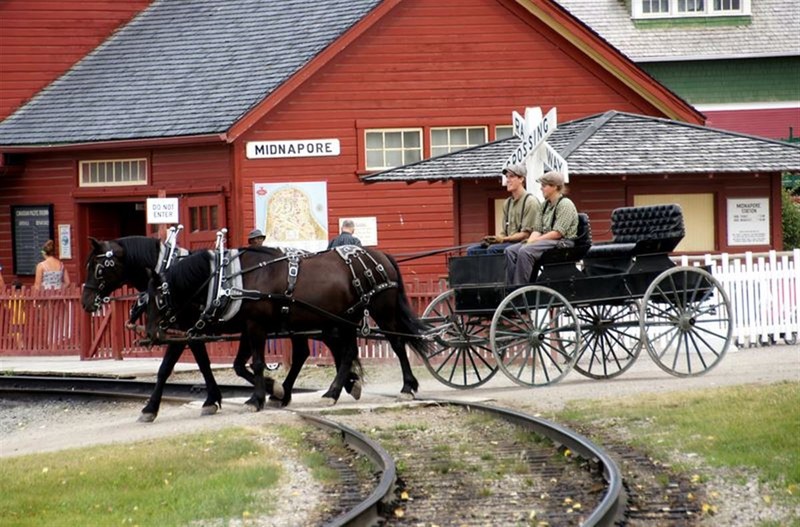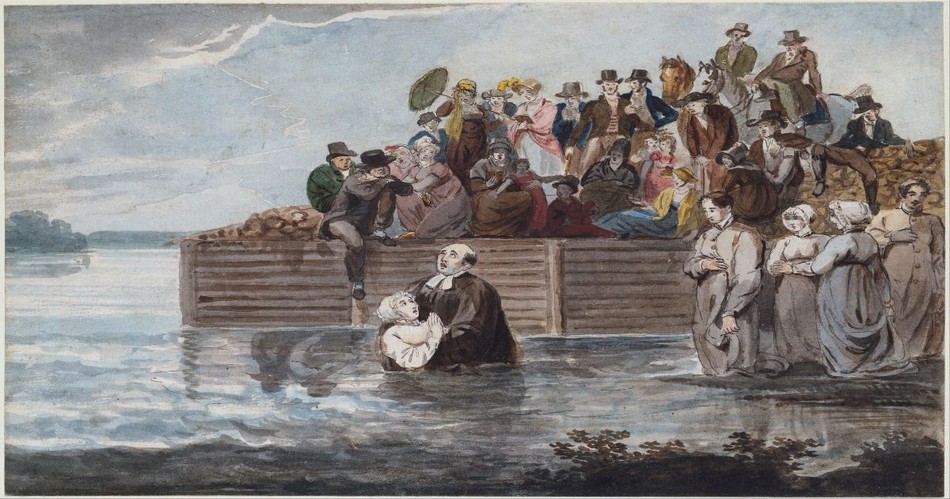Anabaptism originated within the Protestant Reformation of the 16th century founded upon a differing belief of baptism from the Catholic Church. The Anabaptist movement directly inspired the development of several Christian groups located around the world today.
Discover the origin, history, and beliefs of Anabaptists below.

Origin of Anabaptism
Anabaptists are theorized to have originated in the 16th century with the Radical Reformers. Although historians have identified additional specific theologians and groups as their predecessors because of a similar method to their understanding and adherence of the Bible.
According to Wikipedia, Medieval protesters of the Church and Anabaptists who valued a literal interpretation of the Sermon on the Mount shared the following declarations:
- The believer must not swear oaths or refer disputes between believers to law-courts for resolution, in accordance with 1 Corinthians 6:1–11.
- The believer must not bear arms or offer forcible resistance to wrongdoers, nor wield the sword. No Christian has the jus gladii (the right of the sword). Matthew 5:39
- Civil government belongs to the world. The believer belongs to God's kingdom, so must not fill any office nor hold any rank under government, which is to be passively obeyed. John 18:36 Romans 13:1–7
- Sinners or unfaithful ones are to be excommunicated, and expelled from the sacraments and from intercourse with believers saving that they atone, according to 1 Corinthians 5:9–13 and Matthew 18:15, but no violence is to be practiced against them.
Below are three central views on origins of the Anabaptists:
- Anabaptism started with a single movement in Zürich and developed from there;
- It occurred through several independent movements; and
- It was a continuation of true New Testament Christianity (apostolic succession)

History of Anabaptism
Anabaptism was a movement within the Protestant Reformation. The movement’s most notable position was adult baptism. In its first generation, followers participated in a second baptism, which was a violation condemned by death following the law of that era. Members renounced the name Anabaptist, or Rebaptizer, as they disavowed their own baptism as children as a sacrilegious ceremony. They believed the open declaration of sin and faith, followed by adult baptism, to be the solely righteous form of baptism. Led by the Swiss Reformer Huldrych Zwingli, they regarded that infants are not culpable for sin until they become conscious of good and evil and can practice their own free will, atone, and receive baptism.
The Anabaptists, like much of the Protestant Reformers, were resolved to renew the traditions and essence of the archaic church and frequently recognized their affliction with that of the martyrs of the early Christian era. Many were convinced that they were existing at the end of time, and anticipated the impending return of Jesus Christ.
The intensity of the Anabaptist leaders and the radical implications of their teaching led to their banishment from continuous cities. This actually boosted the momentum of a practical missionary movement. Civil officials took harsher measures, and many of the initial Anabaptist leaders perished in prison or were executed.

Anabaptist Beliefs and Persecution
The name Anabaptist indicates "one who baptizes again". Persecutors called them this, relating to the custom of baptizing persons when they converted or confessed their faith in Christ, even if they had been baptized as newborns. Anabaptists insisted that baptismal candidates be able to make a declaration of faith that is freely determined and so renounced baptism of infants. The early members of this movement did not accept the name Anabaptist, claiming that infant baptism was not part of scripture and was therefore invalid and meaningless. They said that baptizing self-confessed devotees was their first true baptism:
"I have never taught Anabaptism.... But the right baptism of Christ, which is preceded by teaching and oral confession of faith, I teach, and say that infant baptism is a robbery of the right baptism of Christ." — Hubmaier, Balthasar (1526), Short apology.
Anabaptists were frequently persecuted starting in the 16th century by both Magisterial Protestants and Roman Catholics, mainly because of their interpretation of the biblical text which put them in opposition with established state church and government. Anabaptism was never instituted by any state authority and consequently never held any of the privileges that come with it.
Most Anabaptists adhered to a strict interpretation of the Sermon on the Mount which impeded taking oaths, engaging in militant services, and participating in civil government. Other groups who followed rebaptism, now gone, considered otherwise and obliged with these elements of civil society. They were therefore essentially Anabaptists, however conservative Amish and Mennonites as some historians regard them excluded from true Anabaptism. Conrad Grebel wrote in a letter to Thomas Müntzer in 1524:
"True Christian believers are sheep among wolves, sheep for the slaughter... Neither do they use worldly sword or war, since all killing has ceased with them."

Modern Anabaptist Fellowship
There are roughly four million Anabaptists in the world today with followers spread across all populated continents. In addition to many smaller Anabaptist groups, the largest include the Mennonites with 2.1 million, the German Baptists with 1.5 million, the Amish with 300 thousand and the Hutterites with 50 thousand.
In the modern day, there are significant cultural variations between conformed Anabaptists, who are not much different much from evangelicals or mainline Protestants, and traditional denominations like the Amish, the Old Colony Mennonites, the Hutterites, and the German Baptist Brethren.
Sources
Anabaptism | Wikipedia.org
Anabaptists | Britannica.com
This article is part of our Denomination Series listing historical facts and theological information about different factions within and from the Christian religion. We provide these articles to help you understand the distinctions between denominations including origin, leadership, doctrine, and beliefs. Explore the various characteristics of different denominations from our list below!
Catholic Church: History, Tradition & Beliefs
Jehovah's Witnesses & Their Beliefs
The Church of Latter Day Saints & Their Beliefs
Baptist Church: History & Beliefs
Presbyterians: History & Beliefs




